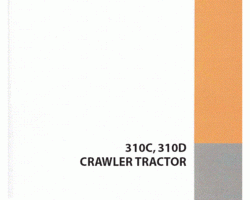Case – Overview and History
Are you looking for agricultural equipment that would change your farming game? Is your prime concern finding a vehicle to help you with your construction task? The equipment from Case CE started appearing in the market the way before these bikes and automobiles were seen on roads.
Case International Harvester is a giant in the agricultural and construction automobile industry with an experience of over 175 years. Now they have a network of sellers and distributors throughout the globe that offer financing services as well. They started producing steam engines initially, and their manufacturing expanded to threshing machines and other harvesting equipment, bringing a revolution in agriculture.
The revolutionary equipment from Case IH that significantly increases the productivity of various crops includes combines and harvesters, tillage equipment, planting and seeding equipment, hay and forage equipment, site-specific farming tools, and sprayers and applicators.
Besides this essential equipment and tractors, the company is now working on modern equipment. This includes Magnum tractors, Farmall, Steiger, and Axial-flow Combines. The company won many awards for its significant contribution to various industries.
It might be amusing for some people how the company has continued its legacy for about two centuries.

Early innovations:
Like most automobile companies, Case CE also initially existed as a company that produced machinery and automobile parts. In 1842, Jerome I. Case founded the J.I. case threshing machine company. They were inspired by the idea of threshing the wheat crops without handwork. Correspondingly he decided to pursue the agricultural industry.
First he designed a hand-powered thresher. However, he moved on to producing better equipment by partnering with his top employees and other potential investors.
Threshers were no longer hand-powered. In 1869, Case produced a steam engine powered machine. However, draft animals were still needed to pull the threshers. This treasure went to foreign markets and the company earned recognition throughout the world.
Case didn’t settle at this point and worked on a self-propelled traction engine that would subside the need for animals to propel the engine.
They built their first self-propelled traction engine in 1876; it still needed horses to steer mechanical beasts. However, the engine was responsible for most traction. Therefore, they became the top-selling steam engine by 1886. Soon after the steam engine production, Case manufactured a gasoline engine, but the agriculture industry was not ready to switch to the new fuel so quickly.
The Progress of Case IH in the 20th century:
The world started shifting to gasoline and fuel engines in the 20th century. Therefore, the company started producing equipment with more powerful engines. In 1904, it expanded to the South American and Russian markets; Moreover, it released its first gasoline-powered tractor in the same year. It also came up with minor agricultural equipment, including plows, water tanks, buggies, and small cars.
At the beginning of the 1900s, many manufacturers consolidated their manufacturing facilities into a single entity, the International Harvester Company. IH produced many successful pieces of equipment. In the later years, that agricultural equipment production increased drastically because of the upcoming war. The post-war trend was not very favorable in terms of tractor production. In 1927, the Case stopped producing steam engines and focused on modern fuels.
Case was a significant manufacturer in the war force during World War Two. It produced equipment for the United States and its allies, including bombs, aircraft parts, and tank doors. In 1942, the company opened three more manufacturing facilities to meet the increasing demand and came up with its first combine in the same year.
Acquisitions:
After the Second World War, the company was strong enough to merge with smaller companies. Therefore, it bought an American Tractor Company (ATC) that was the manufacturer of small tractors in 1950. They were particularly interested in its dozer production.
Case IH Dropped ATC’s name in 1959; after that, a hybrid tractor drove out of the Burlington plant known as 320 Construction King. Case has come up with other models like the T-Series that include the 580T, 590 ST, 580 ST, and 695ST. The Case Service Manual available for each vehicle made it easy to understand the variations in these models.
The company kept on merging with different corporations; however, the most important of them was the acquisition of the assets of the International Harvester corporation that combined with the J.I. Case to form Case IH. It became CNH Global after its merger with New Holland N.V. This merger resulted in the sudden progress of Case, making it a prominent international company once again. Case IH kept inducing innovative techniques, modern engine fuels, and better engineering to its equipment to make the agricultural industry more advanced.

In the 21st century, the sole focus of Case IH is the production of their Magnum Series. This line has been a massive hit since its debut. The company is now the center of every advanced agricultural farm, and effective farming that can compete with modern agricultural trends is impossible without case IH equipment.
Frequently Asked Questions
Who manufactures the Heavy Equipment & Construction Equipment?
Case New Holland, or CNH, now owns the Case and New Holland production lines
Where is Case manufactured in the US?
The home of the Magnum Tractor, in the Racine WI plant, is where the majority of tractors for US markets are produced.
Who is the manufacturer for their Tractor Engines?
FPT Industrial, in Turin, Italy, manufactures many of the components for CNH produced machines.

